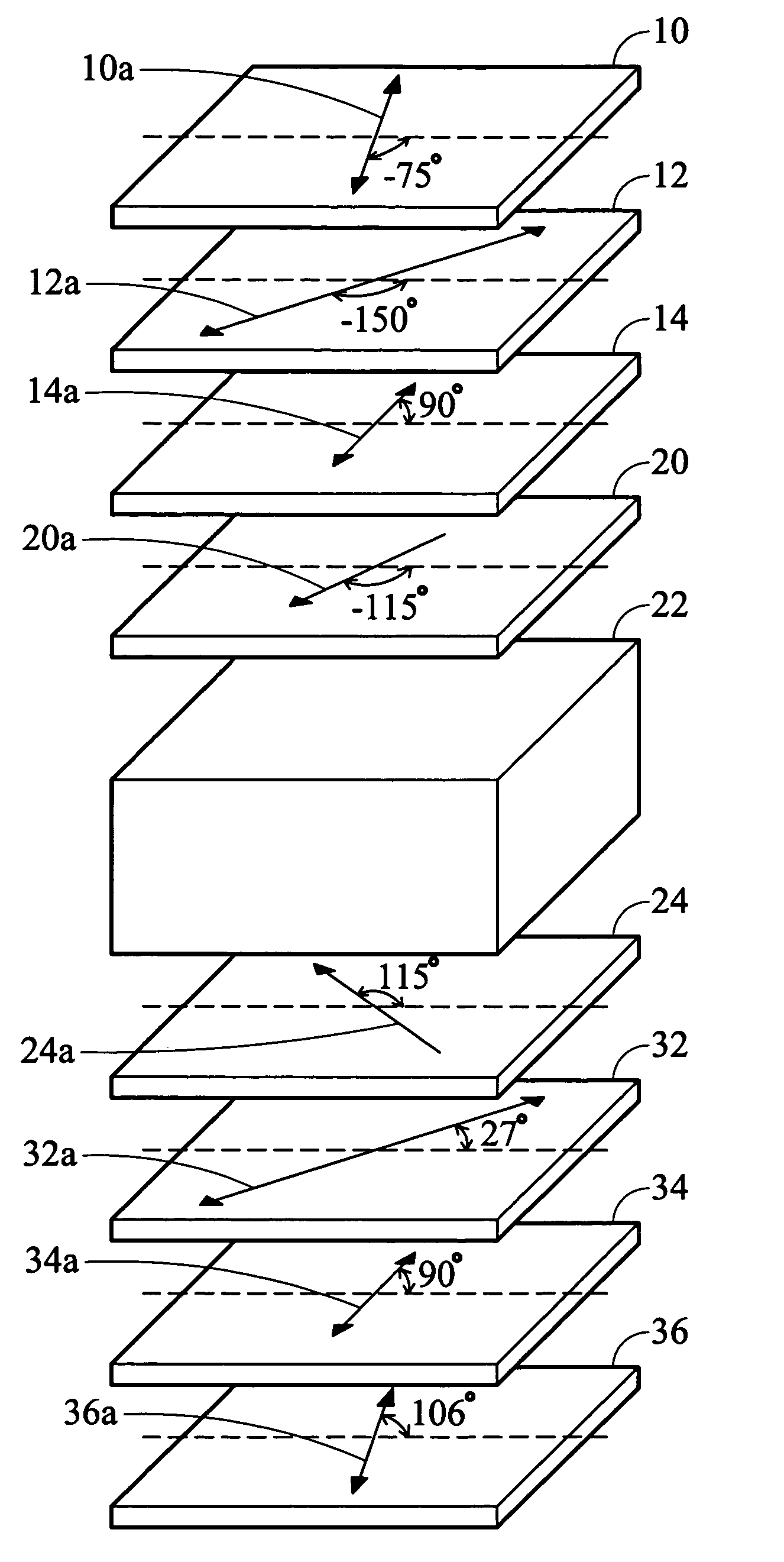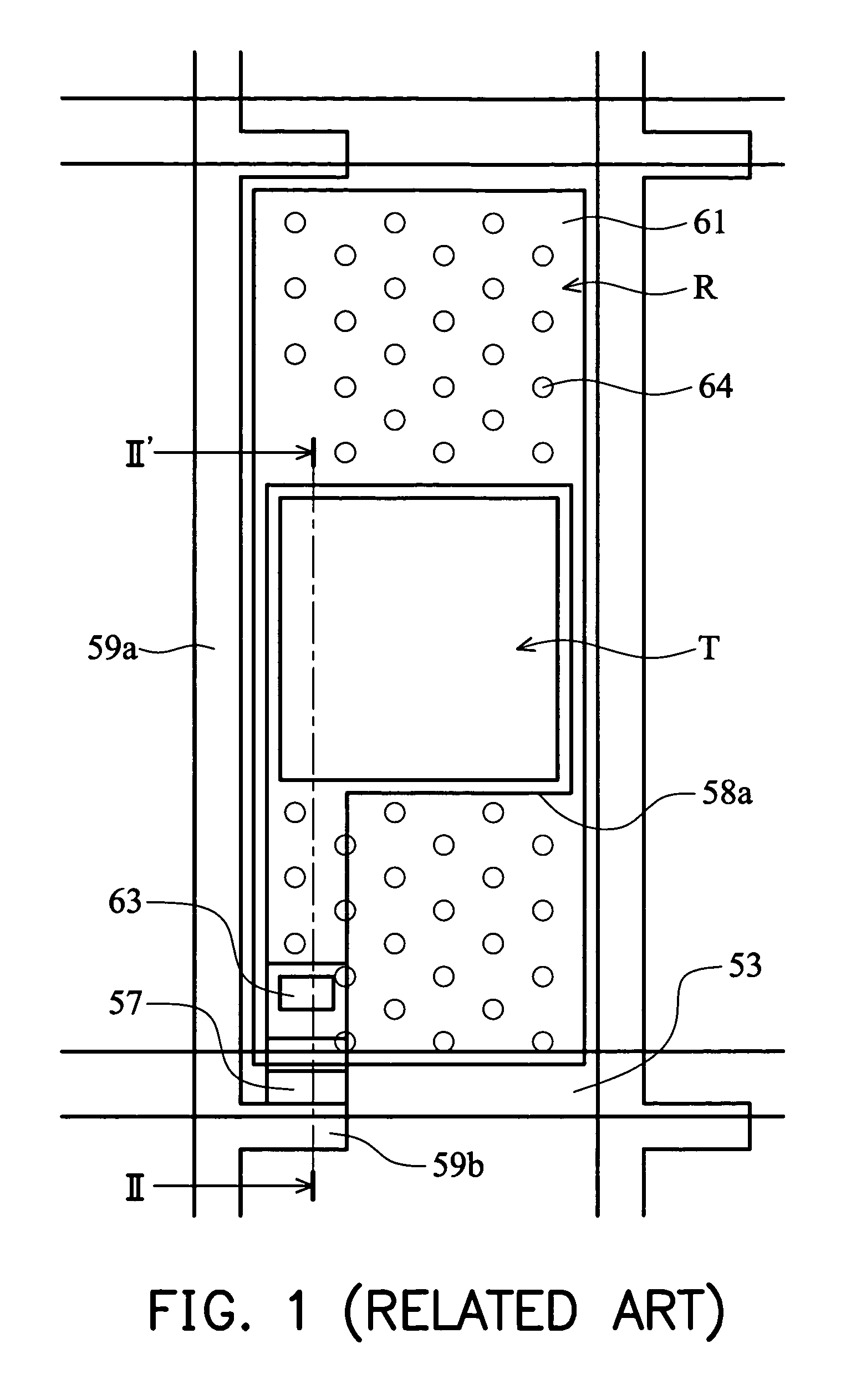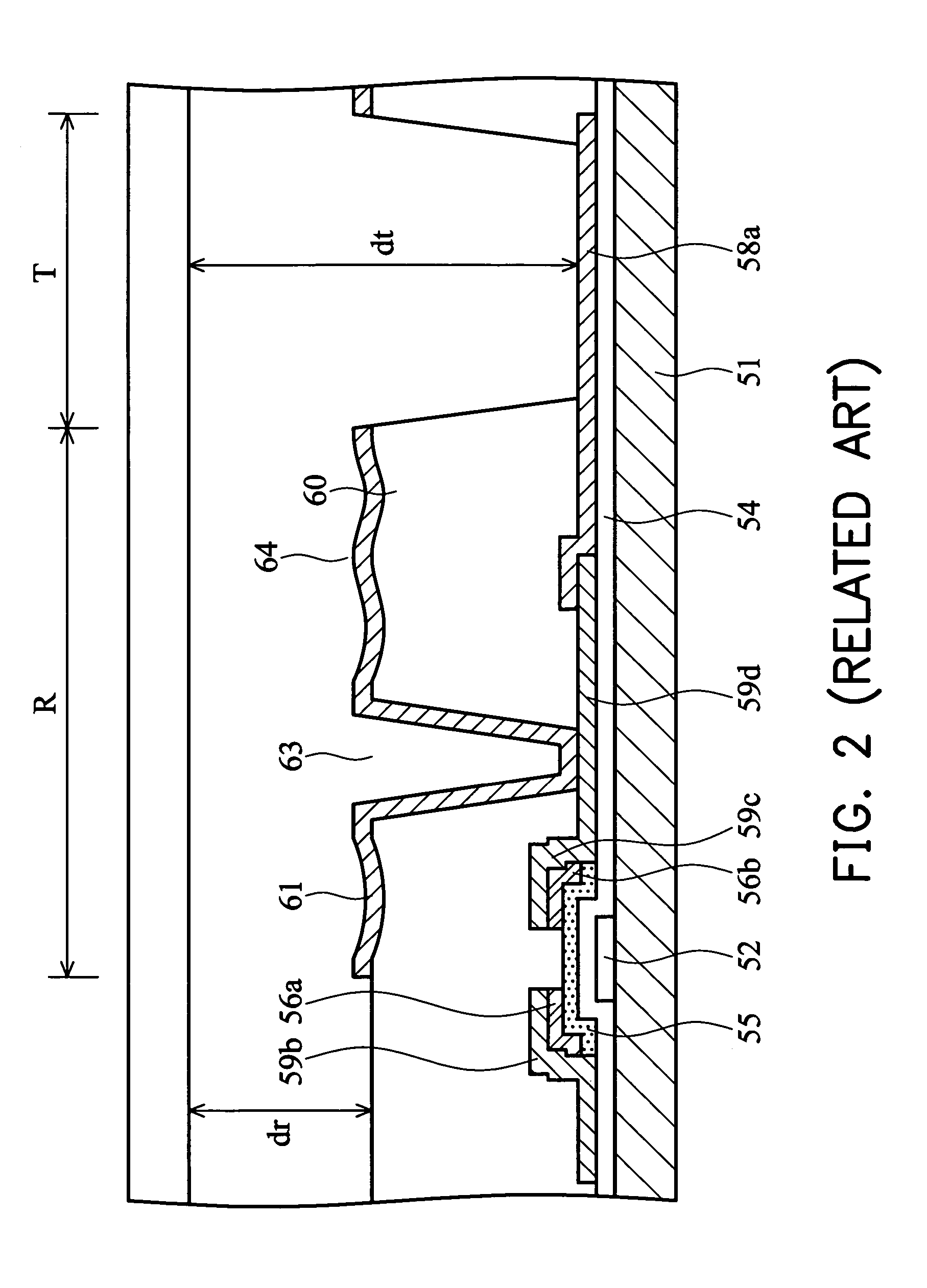Transflective liquid crystal display device having particular angles between optical axes
a liquid crystal display and optical axes technology, applied in liquid crystal compositions, instruments, chemistry apparatus and processes, etc., can solve the problems of low visibility of reflective lcds, increased power consumption, and usually consuming 50% or more of the total power consumed by lcd devices
- Summary
- Abstract
- Description
- Claims
- Application Information
AI Technical Summary
Benefits of technology
Problems solved by technology
Method used
Image
Examples
example 1
[0048]Example 1 is described in detail according to FIG. 4. In Example 1, the twist angle of the liquid crystal layer 22 is 50°, the thickness d of the liquid crystal layer 22 is 35 μm, Δn of the liquid crystal molecules of the liquid crystal layer 22 is ne−no=0.064, wherein ne is the refraction index of the liquid crystal molecules with respect to the extraordinary light and no is the refraction index of the liquid crystal molecules with respect to the ordinary light. The retardation (Δn×d)LC of the liquid crystal cell is 0.064×0.35 μm=224 nm.
[0049]The rubbing direction 20a of the alignment film 20 above the liquid crystal layer 22 and a horizontal reference line H forms an angle of −115°, and the rubbing direction 20a is from the upside down to the left side. The rubbing direction 24a of the alignment film 24 under the liquid crystal layer 22 and the horizontal reference line H forms an angle of 115°, and the rubbing direction 24a is from the downside up to the left side.
[0050]The...
PUM
| Property | Measurement | Unit |
|---|---|---|
| twist angle | aaaaa | aaaaa |
| angle | aaaaa | aaaaa |
| angle | aaaaa | aaaaa |
Abstract
Description
Claims
Application Information
 Login to View More
Login to View More - R&D
- Intellectual Property
- Life Sciences
- Materials
- Tech Scout
- Unparalleled Data Quality
- Higher Quality Content
- 60% Fewer Hallucinations
Browse by: Latest US Patents, China's latest patents, Technical Efficacy Thesaurus, Application Domain, Technology Topic, Popular Technical Reports.
© 2025 PatSnap. All rights reserved.Legal|Privacy policy|Modern Slavery Act Transparency Statement|Sitemap|About US| Contact US: help@patsnap.com



